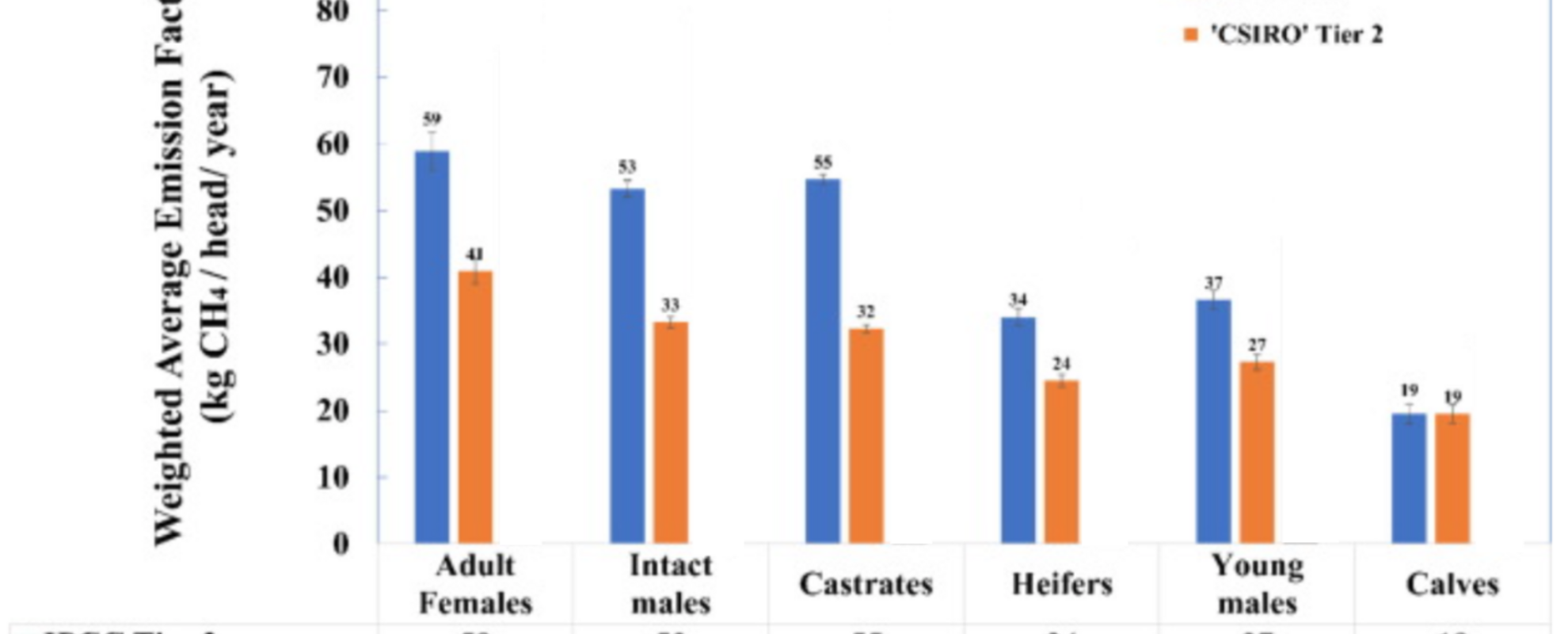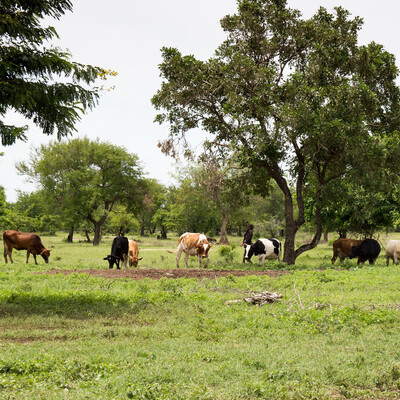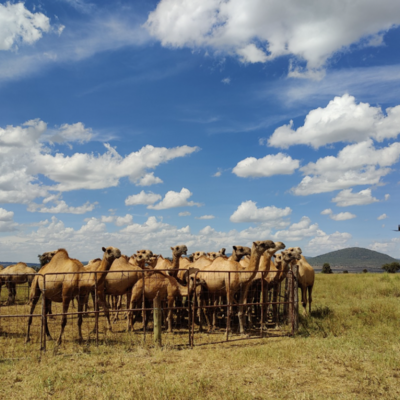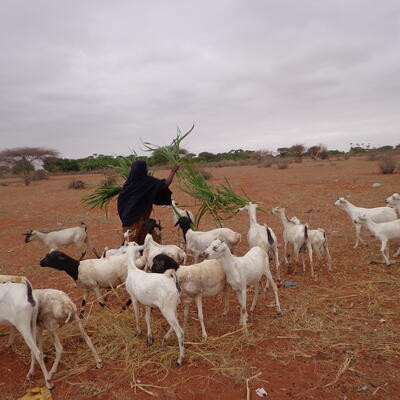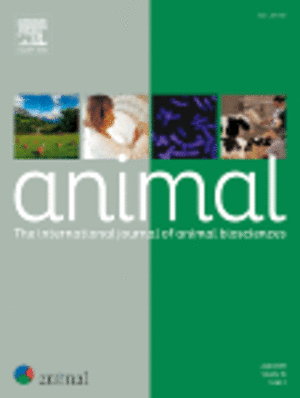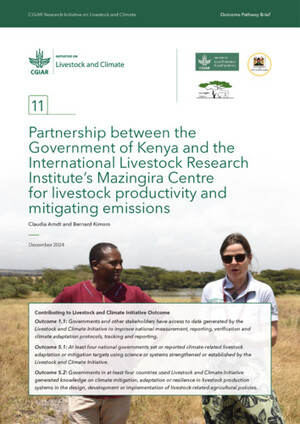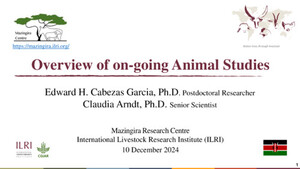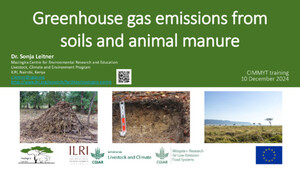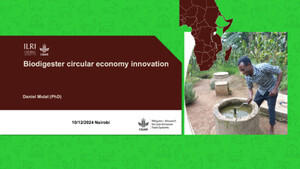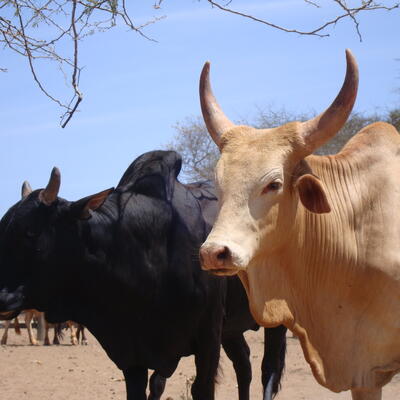
Why livestock emission estimates might vary: The Tier 2 model effect
From Mazingira Centre.
Endale Balcha Gurmu recently lead-authored a paper, Comparison of Tier 1 and 2 methodologies for estimating intake and enteric methane emission factors from smallholder cattle systems in Africa: A case study from Ethiopia, to test how to measure methane emissions specifically for livestock in East Africa.
Gurmu, a consultant at ILRI’s Mazingira Centre and an associate professor at Mekelle University in Ethiopia, completed this research as part of his Climate, Food and Farming, Global Research Alliance Development Scholarship Programme (CLIFF-GRADS) fellowship hosted at ILRI’s Mazingira Centre.
The CLIFF-GRADS program is a joint initiative between the Global Research Alliance on Agricultural Greenhouse Gases (GRA) and the CGIAR Initiative on Low-Emission Food Systems (Mitigate+).
This initiative builds capacity in scientists from low- and middle- income countries. It provides 4 to 6 months scholarships for PhD students to spend to conduct research in agriculture greenhouse gas (GHG) emission quantification and mitigation at different institutions around the globe.
Gurmu was hosted by ILRI in 2022 for six months in Addis Ababa, Ethiopia, advised by Claudia Arndt, senior scientist and Mazingira Centre lead at ILRI, where he analyzed smallholder mixed-crop livestock holders data collected under the Program for Climate Smart Livestock (PCSL).
Smallholder mixed-crop livestock systems include family farms that rely on cattle and crop production. Gurmu's project was to estimate how much GHG is emitted by these farms in Ethiopia, in the form of enteric methane. Enteric methane is produced by the digestive system in ruminant animals such as cattle, goats, sheep and buffalos.
He calculated enteric methane emissions using two different methodologies, following ILRI’s approach to generate region-specific enteric methane emission factors (methane produced by an animal per year) for cattle kept in smallholder systems that was based on the Commonwealth Scientific and Industrial Research Organisation (CSIRO) methodology.
In addition, he estimated emission factors following the Intergovernmental Panel on Climate Change (IPCC) methodology that is the internationally acknowledged standard for estimating livestock emissions for national GHG inventories.
Gurmu explained the importance of his research in a question and answer session.
Q: What initially sparked interest to study these emissions models?
A: The aim of the research was to collect data to establish a baseline for GHG emissions from smallholder systems in highland areas in Ethiopia (part of PCSL). The study compared the IPCC and the CSIRO Tier 2 methodologies to estimate enteric methane emission factor from smallholder mixed-crop livestock systems in east Africa, assuming that both methodologies should yield comparable results.
Q: Why did you choose to conduct research in Ethiopia?
A: The research with ILRI was funded through the GIZ/BMZ-supported Program for Climate-smart Livestock System (PCSL). Ethiopia was a target country of the program. The program selected sites to be representative of agro-ecological zones and systems across East Africa, as the aim was that findings can be applied elsewhere across East Africa.
Q: What was most surprising about the findings?
A: One of the most surprising aspects of the findings was the divergence in results from the different models. When we compared the two emission models (CSIRO and IPCC), as mentioned we thought the models would produce similar outcomes because of using the same input parameters and were built to predict intake of cattle. However, they yielded different results. The CSIRO Tier 2 methodology resulted in a lower emission factor compared to the IPCC Tier 2 methodology.
Q: How do the findings change the way livestock emissions should be estimated?
A: Ethiopia relies on IPCC models for estimating GHG emissions from livestock systems without considering potential variations. However, what we found from this study highlights the importance of validating emission calculations with local data and if we need to adjust existing models or build new ones, as we currently cannot say what model is correct because we have no experimental data to compare the estimations to.
Q: What will these findings enable Ethiopia to do now?
A: The findings will trigger further studies that aim at comparing predicted intake and emissions with actual intake and measured emissions. This data will help to determine the precision and accuracy of each model in estimating emissions. By doing so, Ethiopia, along with the rest of Africa, can identify the most precise and reliable model for estimating livestock emissions, leading to more accurate national estimations.
Acknowledgements
We appreciate Jane Poole for the support in data analysis. The authors would also like to thank the Global Research Alliance on agriculture Greenhouse Gases (GRA) through their CLIFF-GRADS program. We thank the International Livestock Research Institute for hosting the recipient and to the Government of New Zealand for providing financial support.
Financial support statement
This work was funded through the Program for Climate Smart Livestock (PCSL) which received financial support from the German Federal Ministry for Economic Cooperation and Development (BMZ) commissioned by the Deutsche Gesellschaft für Internationale Zusammenarbeit (GIZ) through the Fund International Agricultural Research (FIA), grant number: 81231239. Further support for this study was provided through the CGIAR Initiatives on Low-Emission Food Systems (Mitigate+) and Livestock and Climate, supported by contributors to the CGIAR Trust Fund. We would like to thank all funders who support this research through their contributions to the CGIAR Trust Fund. Work with the pioneer farmers has been partially financed by the GIZ-commissioned German Federal Ministry for Economic Cooperation and Development (BMZ) (grant: 2017.0119.2). This study was also funded by the New Zealand Government to support the objectives of the Livestock Research Group of the Global Research Alliance on Agricultural Greenhouse Gases.






